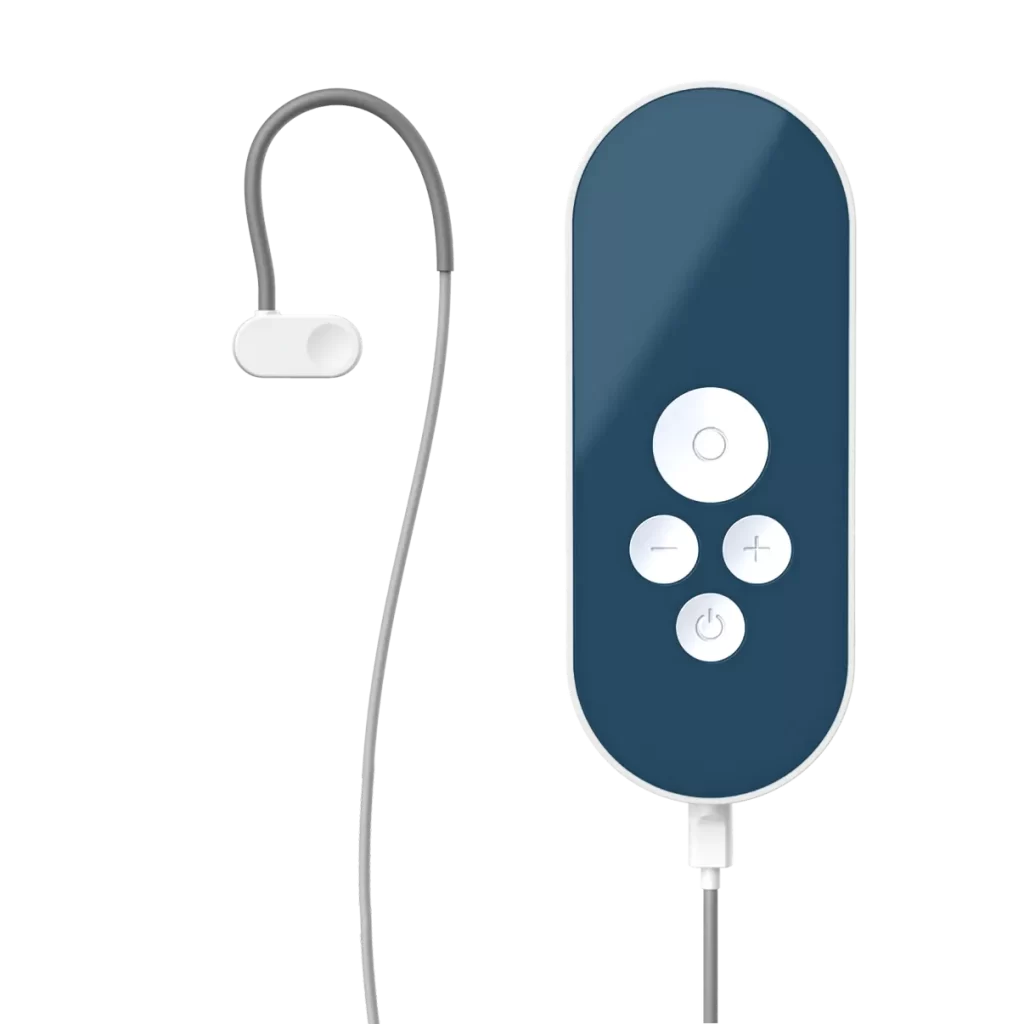Key Points
- Stress isn’t just mental — it disrupts sleep, energy, focus, and long-term health.
- Mindfulness, breathwork, and structured breaks can help regulate the stress response.
- Lifestyle anchors like sleep, exercise, and digital boundaries provide daily resilience.
- Workplace culture and environment strongly shape stress outcomes.
- Innovative solutions, including CE-marked non-invasive vagal neuromodulation systems, offer new pathways to stress relief.
Always-On Work Culture and the Rising Toll of Stress
Stress has become the silent currency of modern professional life. Nearly 80% of U.S. workers report experiencing stress at work, and about one in four describe their stress as “high or extreme”. For entrepreneurs, executives, and knowledge workers, this is no longer a temporary hurdle but a persistent part of everyday life — woven into inboxes, deadlines, and digital overload. Left unaddressed, stress doesn’t just feel uncomfortable; it quietly chips away at focus, resilience, and health.
Stress at Work: Why Professionals Can’t Afford to Ignore It
Modern professionals live in an environment designed for constant stimulation. Smartphones rarely sleep, video calls pile up, and the pressure to perform never quite lifts. While some stress can sharpen performance, chronic stress has the opposite effect: it impairs creativity, weakens immune function, and accelerates burnout.
If unmanaged, chronic stress is associated with elevated blood pressure, palpitations, digestive disturbances, and worsening of existing health conditions. It can also worsen depressive states and anxious thoughts, reducing overall quality of life. In workplaces, high stress contributes to absenteeism, disengagement, and costly turnover. That makes mastering stress management not only a personal necessity but also a professional advantage.
Subtle Signs Stress Is Taking Over Your Daily Life
Stress rarely announces itself all at once. Instead, it creeps in as:
- Mental fatigue: difficulty concentrating, memory lapses, reduced decision-making.
- Physical signals: headaches, muscle tension, rapid heartbeat, sleep problems.
- Emotional strain: irritability, restlessness, and loss of motivation.
- Workplace fallout: lower productivity, strained teamwork, and disengagement.
Over time, these signals stack up, making even small tasks feel overwhelming. Recognising them early is the first step toward breaking the cycle.
The Hidden Science: How Stress Rewires the Brain and Body
Stress is more than a feeling; it’s a whole-body response. When the brain perceives a threat — whether a deadline or a demanding client — it activates the hypothalamic-pituitary-adrenal (HPA) axis. This built-in alarm system exists to protect you from danger, but in modern life, it often gets activated by work pressure rather than real threats. This system releases cortisol and adrenaline, priming the body for “fight or flight”.
Short bursts of stress can sharpen focus, but prolonged activation keeps cortisol elevated, which disrupts sleep, increases blood sugar, and weakens immunity. Neuroscience also shows that chronic stress shrinks connections in the prefrontal cortex — the area responsible for planning and focus — while strengthening fear pathways in the amygdala. The result: professionals feel less clear-headed and more reactive, even when no real danger is present.
Proven Techniques That Reset the Stress Response
Fortunately, decades of research point to strategies that can reset the stress response and strengthen resilience.
1. Mindfulness & Breathing Practices
Studies show that mindfulness and slow, controlled breathing reduce cortisol and calm the nervous system. Even two minutes of focused breathing before a meeting can lower heart rate and restore mental clarity.
2. Exercise & Movement
Physical activity releases endorphins, natural mood elevators that buffer the effects of stress. Whether it’s a brisk walk between meetings or structured workouts, consistent movement helps regulate stress hormones.
3. Sleep Optimisation
Sleep problems are both a cause and an effect of stress. Prioritising 7–9 hours of rest, maintaining a regular bedtime, and reducing late-night screen use support circadian rhythm alignment and resilience.
4. Structured Breaks
Research on productivity cycles suggests that micro-breaks — even five minutes away from screens — improve focus and prevent mental fatigue. Professionals can experiment with the “Pomodoro Technique” or the 90-minute ultradian rhythm cycle.
5. Digital Boundaries
Constant notifications fuel stress. Setting device-free windows, turning off nonessential alerts, and creating “focus hours” improve both productivity and peace of mind.
6. Innovative Therapies
Emerging solutions, including CE-marked non-invasive vagal neuromodulation systems, are being explored for their potential to support stress regulation. Early studies suggest they may help modulate autonomic activity, though research is still evolving, and they are not a replacement for medical therapy where required.
Building a Sustainable Stress-Relief Toolkit for Work and Life
Stress may be unavoidable, but being consumed by it is not. The key is consistency: adopting small, daily practices that retrain the body and mind to respond with calm rather than collapse. Start with one or two strategies — perhaps a morning walk and a breathing reset before big meetings — and build from there.
For those experiencing persistent or overwhelming stress, consulting a health professional is a wise step. Organisations like the American Psychological Association and the National Institutes of Health also provide practical resources. By combining self-care with evidence-based strategies, modern professionals can protect their focus, energy, and long-term well-being.
Managing stress is a long-term process, and what works best may differ from person to person.
This blog post aims to be informational and should not replace professional health advice. Always consult with a health professional for personalised advice.
Subscribe for Free for more insightful health articles tailored to your needs.
Sources
- Occupational Safety and Health Administration. Workplace Stress – Understanding the Problem | OSHA.gov | Occupational Safety and Health Administration [Internet]. Osha.gov. 2020. Available from: http://www.osha.gov/workplace-stress/understanding-the-problem
- Bui T, Zackula R, Dugan K, Ablah E. Workplace Stress and Productivity: A Cross-Sectional Study. Kansas Journal of Medicine [Internet]. 2021 Feb 12;14(1):42–5. Available from: https://pmc.ncbi.nlm.nih.gov/articles/PMC7889069/
- Ring M. An Integrative Approach to HPA Axis Dysfunction: From Recognition to Recovery. The American Journal of Medicine. 2025 Jun;
- Woo E, Sansing LH, Arnsten AFT, Datta D. Chronic Stress Weakens Connectivity in the Prefrontal Cortex: Architectural and Molecular Changes. Chronic Stress. 2021 Jan;5:247054702110292.
- Staats P, Giannakopoulos G, Blake J, Liebler E, Levy RM. The Use of Non‐invasive Vagus Nerve Stimulation to Treat Respiratory Symptoms Associated With COVID‐19: A Theoretical Hypothesis and Early Clinical Experience. Neuromodulation [Internet]. 2020 May 12; Available from: https://www.ncbi.nlm.nih.gov/pmc/articles/PMC7267613/





Interesting concept! I like that it’s something you can use while working or relaxing.
If this really helps reset the nervous system, it could be a total breakthrough.